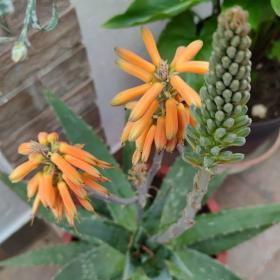The native Aloe Vera (Aloe Barbadensis) plant gets its remarkable therapeutic properties from more than 200 biologically active compounds that work together like individual members of a finely tuned orchestra. But like an orchestra, they depend on a conductor—the polysaccharide molecule—to keep them working in concert synergistically.
Unfortunately, standard commercial processing of Aloe Barbadensis degrades the polysaccharides to a point where most mass-produced extracts and gels have pure biological activity. That means many products containing aloe vera don’t provide the benefits consumers demand.
The Aloe Vera plant and its gel have been revered throughout history for their “magical” healing capabilities. Today, science has proven Aloe Vera’s effectiveness in a wide variety of external and internal applications.
That’s because they’re cut fresh from the gel/filets of Aloe Vera, which contains vitamins B, C, and E, zinc, 20 amino acids, and enzymes. That makes Aloe Vera more valuable than ever in topicals and nutraceuticals for:- Burn & wound healing
- Anti-inflammatory effects
- Immune restoration
- Antioxidant
- Moisturizing
- Gastrointestinal uses
- Arthritis
Throughout the history of folk remedies, raw aloe leaf mucilage, alone or in combination with herbs, spices, and other plant extracts, has been applied to the skin for either beautification or curative purposes. Because of its naturally high water content, this plant product can be used in place of part or all of the water in many conventional skin and hair care product formulations.
Aloe Vera extracts are compatible with the most common water-soluble cosmetic ingredients. They can be used in all types of lotion and cream emulsions, shampoos, liquid and bar soaps, body washes, liquid makeups, and other products containing water typically offered by the cosmetic and pharmaceutical industry.
For example, aloe vera leaf preparations have been used in ointments, shampoos, hair conditioners, hand and body lotions, cleansing creams, skin fresheners, moisturizing creams, peel-off facial masks, night creams, beauty bars, suntan and after-tanning lotions, sunburn, and burn-relief aids, lipsticks, and lip balms. The list of product applications is unlimited.
Modern cosmetic formulators have been exploring the full potential of this interesting plant hydrocolloid in their product lines. They are undoubtedly utilizing the chemistry of natural mucopolysaccharides and natural hydroxyquinones, such as those found in aloe vera, to develop unique products. It is not surprising, therefore, that few prototype cosmetic formulae have appeared in the literature in recent years. Much has been printed, of course, on aloe vera's historical and botanical background.